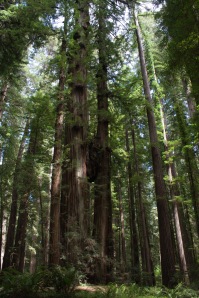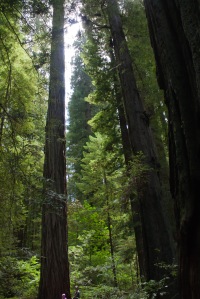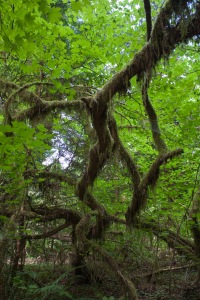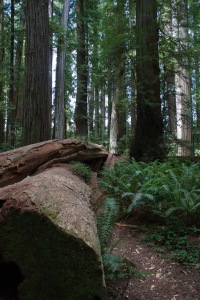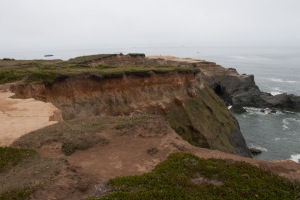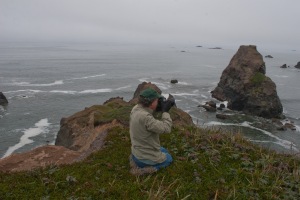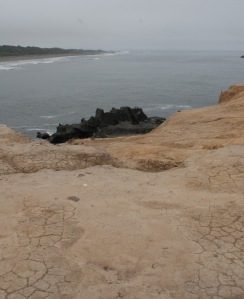It’s been a week and a half since the end of the flam internship. The end of the season finished up nicely as we covered serious ground with the vegetation analysis, but I miss the work already. I like being out in the woods every day, and I already feel lethargic and slightly useless at home. I’m realizing more and more how meaningful that internship was for me, especially as more time goes by. The final day of work, Brian had us write personal thank you letters to our donors describing what the project meant for each of us, and I thought I’d share mine here. It was also cool to read other peoples’ letters as well—everyone had a different aspect that they focused on as important or meaningful for them, it was a very neat reminder that every single aspect of the project really is critical for different people, and the sum is therefore much greater than its individual parts.
8/3/2012
Dear Donor,
This has been a unique and informative summer for flammulated owl research, and it wouldn’t have been possible without you. This was my first summer working for Dr. Brian Linkhart’s ongoing study in Pike Peak National Forest. As a student at Colorado College with aspirations for becoming a field biologist, this summer has been extremely meaningful for me, and I am writing to express my gratitude and explain just how much your contribution has meant for the 2012 Flammulated Owl Crew, the worldwide knowledge of this amazing bird, and for me personally as well.
For more than thirty years, this project has been studying flammulated owl demography, as well as behavior, migration patterns, habitat use, and effects from fire. This year has been particularly interesting since it was the earliest fledging year on record. This means that the owls were laying eggs, hatching, and leaving approximately two weeks earlier than normal. In response to this accelerated schedule, we as a crew worked very hard from the start to ensure we could find all of the nests before the owlets took off. And we succeeded. Thanks to the length and scope of the study, Dr. Linkhart has been able to examine the effects of climate change on owl demography and has discovered a strong correlation between temperature and fledging date. Our research this year fits in as not only the earliest fledging date but also one of the warmest years on record. This has huge implications not only for the future of the owls, but for all parts of the ecosystem that are affected by similar changes.
This accelerated schedule in many ways framed the whole season. Because of the early fledging date, we were able to spend more time in the final month on vegetation analysis, examining the habitats the owls use for nesting, foraging, and territorial singing. We collected much of this information in our Hayman study site, which was severely burned in the Hayman Fire ten years ago. These habitat analyses will examine how flammulated owls use trees in a post-fire landscape. We have yet to fully analyze the data, but it seems clear from the fieldwork that the owls need the patches of older, unburned forest that have become islands in what is still frequently a moonscape.
Our work in the Hayman means we were not strangers to the consequence of high-burn fires. So when the Waldo Canyon wild fire threatened to put a hold on our research this year, we understood what was at stake. I think that was a critical moment for me; I realized how much I truly cared about our work and how devastated we all would have been if we had been unable to continue our work, or if the unthinkable happened and one of our study sites was destroyed. The idea that a researcher must remain completely removed emotionally from their study subjects is impossible—we all care deeply for the owls, and the thought that the adorable owlets we had been doing masses and measurements on daily could be engulfed by wildfires was terrifying. Now that the threat has passed, it makes me believe very strongly in the importance of the Hayman part of the study, where we can look at the effects of such fires on the owls.
Perhaps one of the most exciting implications of this summer’s work, however, is with our continuing use of geolocators to study migration patterns. Flammulated owls are very special in that they are the only North American owl species that migrates long distances. Last summer was the first time the crew had ever retrieved information from geolocators fitted on owls in previous years. Prior to this, nothing had been known about flammulated owl migration patterns. Dr. Linkhart discovered that our owls have been migrating to areas in southern Mexico. This opens up a lot of new questions and possibilities to the study. For instance, if the owls started laying eggs at an earlier date than usual this year in our study sites, it also means that they might have started on their migrations from Mexico earlier as well. That means that there are many more pieces of the puzzle waiting to be examined further south. This year, we attached eight more geolocators, setting the stage to address more of these questions in coming years. This work with geolocators is also very important in the wider world of owl research. This summer we had visitors from two different flammulated owl projects around the country that came to learn from our crew, specifically in regards to the geolocators. As a first year flammulated owl researcher, it was eye-opening to see how respected and important this study is in the world of ornithology.
I am going to be a senior this year at Colorado College, and as I start thinking about what I want to do after graduation, this study has been amazingly valuable. It is an inspirational project, and has solidified my desire to continue doing field work with animals in the future. It feels so fulfilling to have such a thought-provoking, meaningful job, but none of this would have been possible for me without your support. This means more to me than I can probably communicate in words, but suffice to say, this has been one of the best summers of my life.
Thank you so much,
Phoebe Parker-Shames
***
Usually, coming home can be a somewhat stressful experience for me, but this trip has been really wonderful. It can be hard to come home and feel like the identity and independence that I’ve built at school gets reduced back to the childhood habits that inevitably get reinforced when I’m back home. It’s also hard to not be in control of my own space or agenda as much when I’m home. However, this time, many of those issues didn’t seem that bad. It’s been nice to see my family, reconnect with a few friends, and relax.
***
One of the first days I was home, I saw a notice in the paper about a free bird watching tour in North Mountain Park, one of the parks in town that’s done a lot of restoration work over the years. I convinced my mom and dad to go along with me, and so we packed binoculars, cameras, bird books, and headed off to the reasonably early tour. We met up with a group of fifteen or so bird (semi-)enthusiasts, led by an amateur naturalist who guided us through the park, helping us spot birds and mentioning interesting things about them. It was really nice practice for me, and I realized I know more Oregon birds than I thought I did. Some of the highlights for me were spotting some distinctive Cedar Waxwings that were nibbling on berries in the early morning sunlight, getting to see my namesake, a Black Phoebe (which are rather adorable little birds), catching glimpses of gangly Green Herons flying through the trees, and probably best of all, seeing the most vibrant bird I’ve ever seen in my home town: a Lazuli Bunting on the edge of a riverbank. The guide was impressed at my identification abilities, but I know I have a long way to go, I still don’t even have a good sense of general bird shape or flight patterns, and forget calls. However, it did get me really excited about taking ornithology this next year.
***
We took a trip to the redwoods and the coast the second weekend I was home. Heidi and I went ahead and spent a day in Takilma, which was wonderful. It’s so peaceful and beautiful staying in the log cabin that my parents helped build (with a lot of help), and there’s still a real sense of community there. If I ever get the chance, I would love to live there for a while.
It was also a special treat to see the redwoods again. It’s been years since I’ve been, and they’re always breathtaking. I remember when I was younger, I like to write fantasy stories, and I would frequently set them in redwood forests; I was reminded why that was on this trip—the redwoods are a magical place. The light and the overwhelming green bathe everything in fairydust, and the trees themselves are nothing short of miraculous. Their size in incredible, there’s no way to take one in without craning your neck, and they inevitably draw all eyes skyward. It’s a very special place for me.
The coast was also very fun. We stayed in a cozy little house and took walks on the beach. The Oregon coast may not be good for swimming, but it definitely is beautiful. It was also a very nice escape from heat and the smoke that was settling into the valley from local fires.
***
I just got back to my apartment in Colorado Springs. I’m already feeling stressed, happy, and excited. I didn’t really get much done while I was home, and I also have a lot to do to help get the apartment ready for the school year, but it also feels so nice to have my own space. I’m also really enjoying getting to know my roommates, whom I don’t really know very well. There’s so much to look forward to this next year, and then the year beyond that out of school. I have no idea what I’m doing, and there are so many possibilities that it makes me nervous and stressed, but also exhilarated and hopeful.
